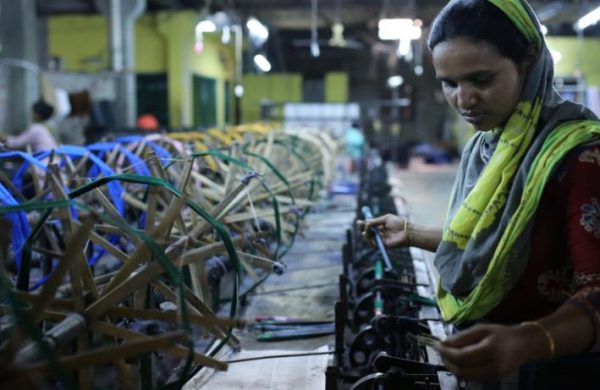Early varieties winter vegetables changing farmers’ fate in North
- Update Time : Wednesday, November 22, 2023

SPECIAL CORRESPONDENT:
Hundreds of farmers in the northern region including Sirajganj, Bogura and Lalmonirhat district have now become self-sufficient by cultivating around 40 advanced varieties of winter vegetables on their Char lands (shoal) emerged at different places in Jamuna, Teesta, Dharla, Saniajan and Ratnai river.
Meanwhile, many villages of the region including Chaluabari, Kazla, Narchi, Poolbari and Kutubpur in Sariakandi upazila of Bogura district, Charkazipur, Natun Meghai, Boroitoli, Polashpur, Manikpotol, Machhuakandi, Khudbandi, Natuarpara and Singrabari in Kazipur upazila, Mesrarchar and Kawakolachar in Sirajganj Sadar upazila of Sirajganj district, Durgapur, Mogolhat and Karnapur in Lalmonirhat district have gained the title as vegetable village due to huge production of vegetables around the year. Besides, hundreds of unemployed farm-labourers in the area, who use to pass idle time few years back, have now got work opportunities in the farm-lands. As a result, poverty, locally called as ‘Monga’ has almost become disappeared from the villages showing the ray of hope to the farmers.
According to the sources, a number of rivers including Jamuna, Bengali, Ichhamoti, Fuljorh, Karotoa, Dharla, Teesta and Saniajan have been flowing amidst different districts including Sirajganj, Bogura, Lalmonirhat, Kurigram, Nilphamari, Rangpur, Gaibandha, Dinajpur and Panchagarh.
At least 40 varieties of vegetables including carrot, potato, sweet potato, coriander leaves, bean, tomato, onion, chilli, brinjal, lady’s finger, radish, sweet pumpkin and cauliflower are cultivated on the shoal lands all around the year except three months of rainy season. Farmers are cultivating those crops in a commercial basis due to development of road communication in the area. Farmers now can transport those goods to different districts including Dhaka and Chattogram easily. Thus, they are earning crores of Taka from this sector.
Local economists said, about Tk 1000 million is now being earned from this region daily by selling vegetables. The proportion of earnings from winter vegetables goes up every year centering the advent of winter.
Rahmat Ali, a farmer of Chaliabari village in Sariakandi upazila of Bogura district told The Daily Sky that, “We are supplying the goods to different parts of the country including Dhaka and Chattogram after fulfilling the local demands. Due to good yield of various advanced varieties of vegetables, we are getting good profit. Besides, the production cost of those goods has remained under control. We get seeds, fertilizers, pesticides and other necessary things besides our hands. So, we are happy to producing such types of vegetables on our silted lands.”
“This type of sandy land is also suitable for watermelon and ground nut farming,” he added.
Roghu Nath Mondal, a farmer of Mesrarchar village in Sirajganj Sadar upazila said, “Once, farm-labourers of those areas use to pass idle time for want of works. Many also use to face Monga and move to different rich districts including Dhaka in search of works. But now, farm labourers earn a good amount of money from this sector.
While talking, some officials of different NGOs and Agriculture Extension Department (AED) said, “Many Char-lands have still remained out of cultivation. If those lands are brought under cultivation, this region doubtlessly will be self-sufficient in foods. Not only that, many youths will turn to be new entrepreneurs.”
Mamunul Islam Pappu, Owner of Dhaka Seeds Store (Dhaka Biz Bhandar) said, “Some high quality seed producing farms have started seed production in northern region including Dugrapur, Mogolhat, Karnapur, Kazipur and Sariakandi area. Consequently, farmers are getting high quality of seeds with reasonable prices.”
Motlubur Rahman, Deputy Director (DD) of Agriculture Extension Department (AED) in Bogura said, “Huge quantities of vegetables are going to different areas of the country everyday from here with hundreds of trucks. Selling vegetables, many poor farmers in the area have changed their livelihoods and are now leading happy life with their families.”

















